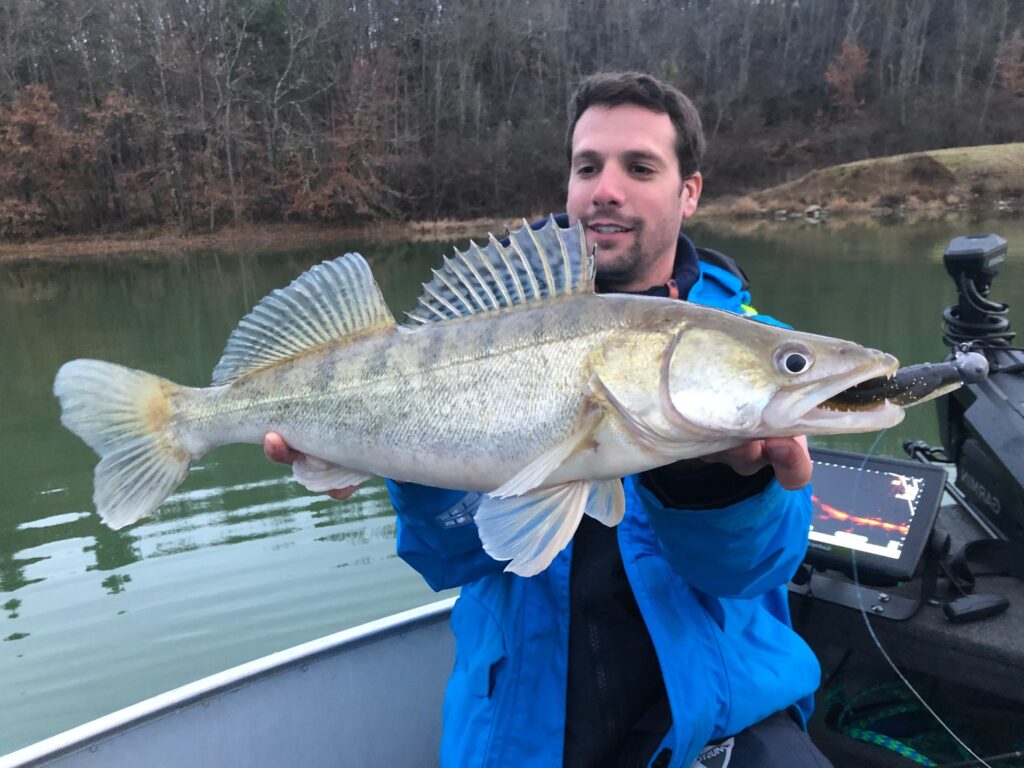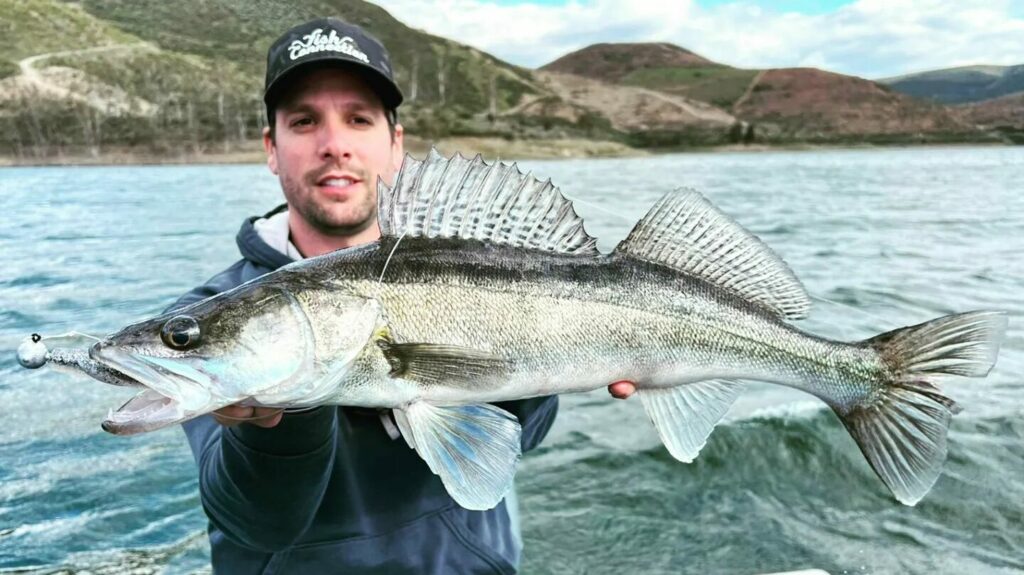The Pike-perch is a fish that is as mysterious as it is fascinating for us anglers.. While its fight is generally less violent than that of a pike or black bass, its bite will often leave you speechless. Pike-perch fishing is like stalking, and many of us are baffled by the lunatic nature of this fish. Fishing for pike-perch requires, above all, a good knowledge of the fish. That's why we've compiled everything you need to know about pike perch in this article.
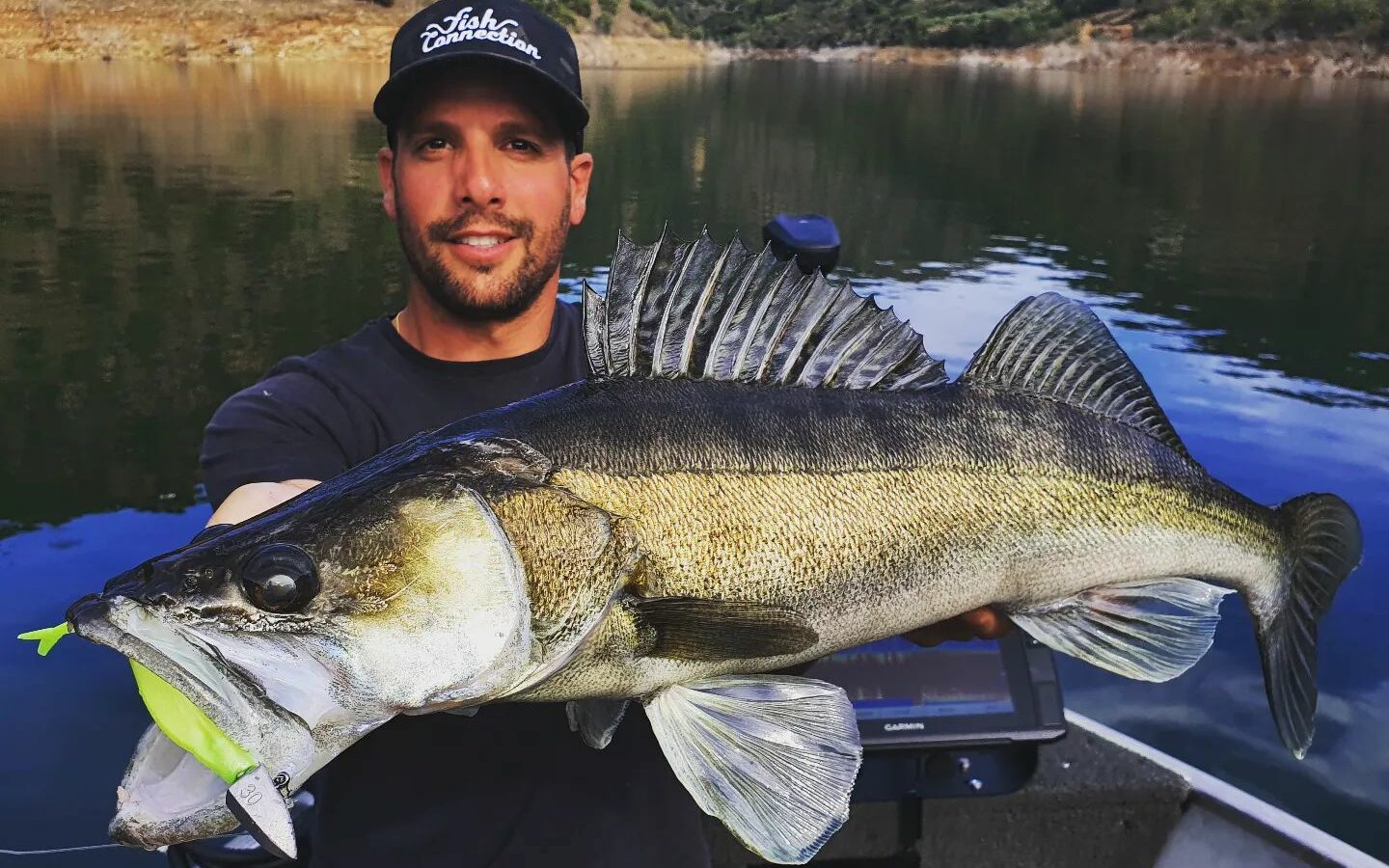
The origins of the pike-perch
The pike-perch (Sander lucioperca) is a freshwater carnivore of the percidswhich is mainly located in Europe.
The name "pike-perch" comes from the Latin "sanderwhich means "freshwater fish. This name was given to this species because of its presence in many European rivers, where it has been known since ancient times. Pike-perch are also known by other names, such as zander in Germany or pikeperch in England. In Spain, you can also hear talk of " lucioperca" which is the scientific name of this species (Sander lucioperca). This name comes from the Latin " lucius" which means pole" and perca" which means fish" .
Pike-perch can be found in many of Europe's rivers, from the Rhône to the Danube, via the Baltic and the Caspian. The pike-perch is an adaptable species that can live in a variety of aquatic environments. It can be found in fast-flowing rivers to calm lakes and ponds. It is considered a stable species, although threatened by pollution, overfishing and habitat degradation.
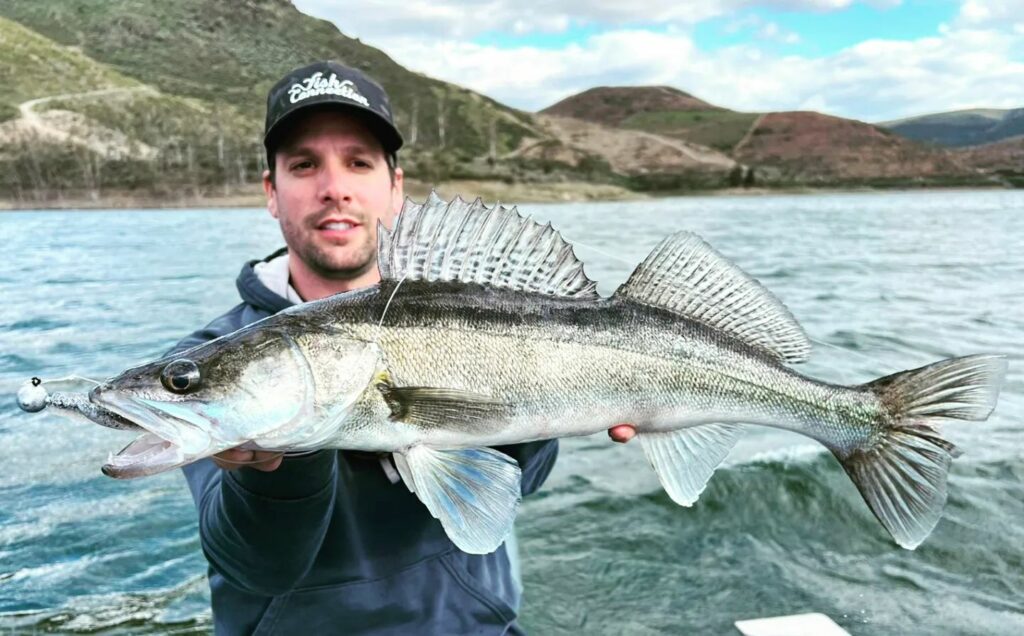
Fish morphology
The pike-perch (Sander lucioperca) is characterised by its elongated, slender shape. It has a broad head and a well-developed mouth with many sharp teeth. It is known for its beauty and brilliant colour, which varies from dark grey to olive green. The pike-perch has a silvery sheen on its body and dark vertical stripes that give it a distinctive appearance. Its dorsal and pectoral fins are often tinged with yellow or orange. The zander's dorsal fin is well developed and has numerous spines. The anal fin is smaller and also has a few spines.
Pike-perch are generally between 30 and 80 cm long and can weigh up to 10 kg. Older individuals tend to be larger and heavier than young pike-perch. Females are often slightly larger than males.
View of the fish
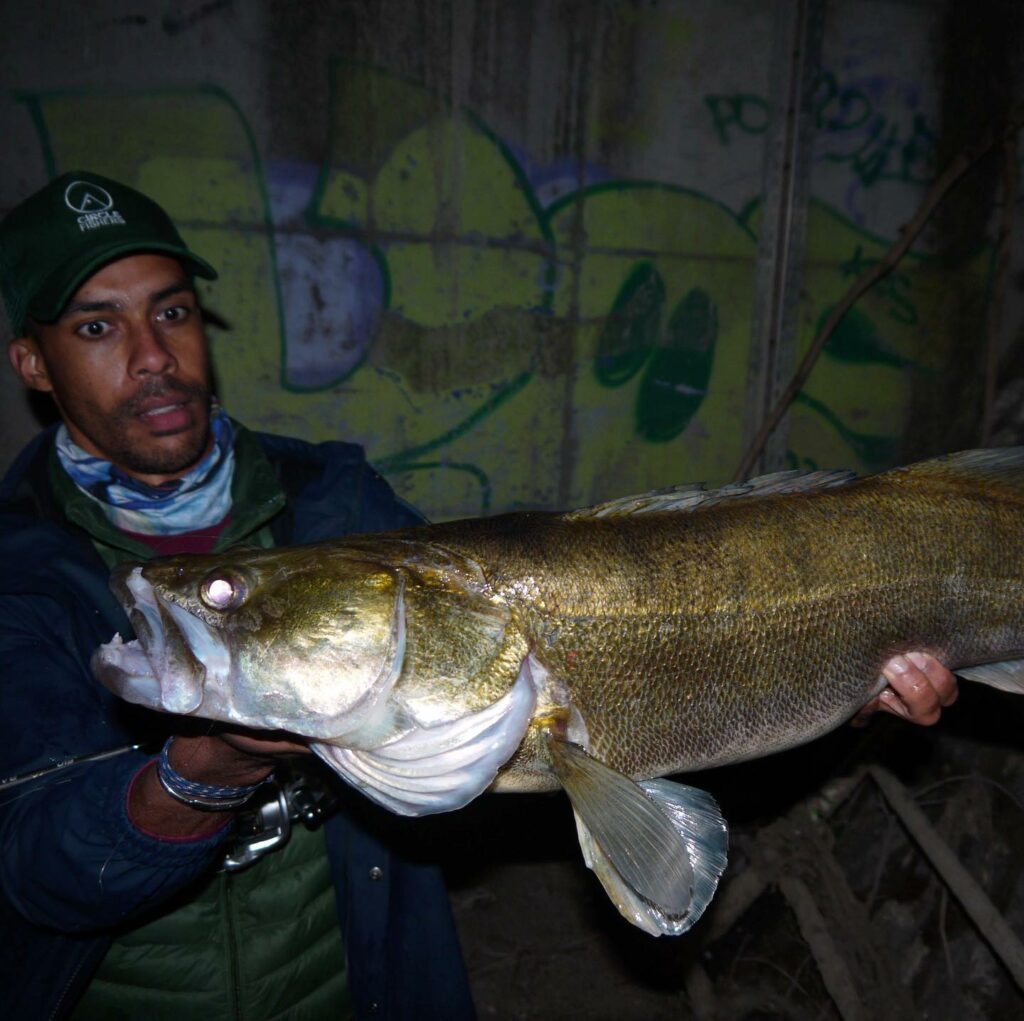
The pike perch has relatively good vision underwater, although this depends on a number of factors such as the luminosity, depth and quality of water.
In general, pike-perch are able to detect the presence of prey and predators at relatively long distances. Its sharp vision in dark waters and its ability to detect rapid movements are its main assets.
Pike-perch have two eyes located on the upper side of their head. This allows them to perceive depth and the movements of objects above them.
Its eyes are also equipped with lenses that enable it to focus on objects at different distances and in murky water.
Pike-perch are able to perceive colours underwater, although their perception of colours is often modified by the luminosity and quality of the water.
The sensory organs
Pike-perch also use other perception mechanisms to detect prey and predators underwater. For example, it uses its pectoral fins to detect vibrations and movements in the water. It also has sensitive sensors along its head and jaw. These enable it to detect changes in water pressure and temperature. These different perception mechanisms enable it to navigate and move efficiently in its environment, especially at night.
Fish reproduction
Pike-perch (Sander lucioperca) generally reach their sexual majority between the ages of 2 and 5.. However, this age can vary depending on many factors: water temperature, food availability and environmental conditions. Male and female pike-perch are generally of similar size and weight when they reach their sexual majority, although females are often slightly larger than males.
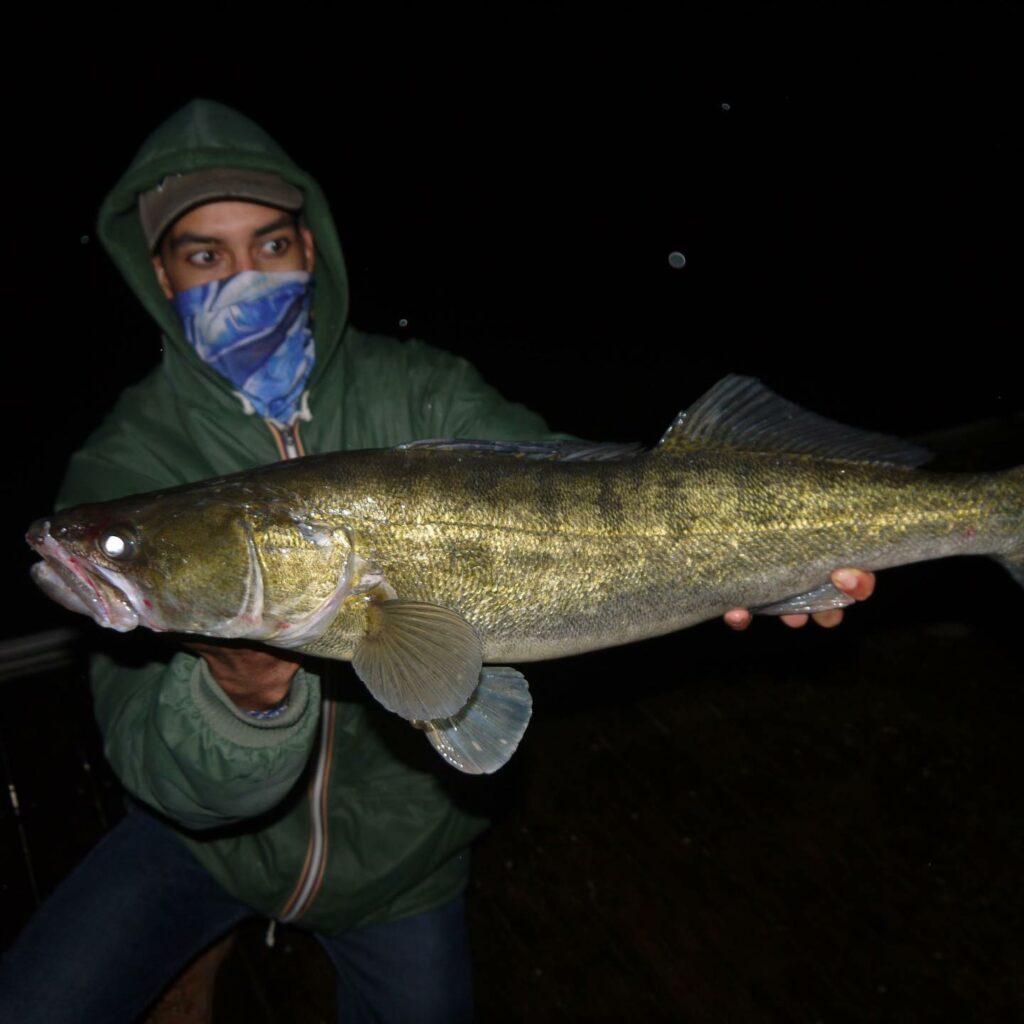
At spawning time, pike-perch gather in spawning grounds, such as submerged branches or rocks, where they lay their eggs. The eggs are fertilised by the males and protected by the parents until they hatch. The fry are then protected by the parents until they are old enough to fend for themselves.
Pike-perch generally reproduce in spring, when water temperatures are between 12 and 18 degrees. Reproduction depends on many factors, such as the age, size and physical condition of the individuals, as well as environmental conditions such as water temperature and food availability.
In general, a female can lay between 5,000 and 20,000 eggs. However, some large females can lay up to 50,000 eggs.
The eggs are then fertilised by the males and protected by the parents until they hatch.
The fry are then protected by their parents until they are old enough to fend for themselves.
Pike-perch habitat
The pike-perch is an adaptable fish that can live in a wide variety of habitats: lakes, rivers, canals and ponds. It prefers calm, shallow waters with abundant vegetation. But it can also be found in deeper, more flowing waters.
Pike-perch are lucifugous fish. This means that they prefer the dark. They are therefore active at dusk and at night, generally between 6pm and midnight. You will therefore find them mainly in spots where the light is low.

Although generally sedentary, they are capable of travelling great distances depending on the water temperature, particularly in the case of females.
Although many anglers fish for pike-perch in winter, they are most active in summer. In fact, this period corresponds to the growth period of the species.
Pike-perch feeding
Young pike-perch feed mainly on plankton and small invertebrates until they are big enough to hunt larger prey. Adult pike-perch generally hunt fish, molluscs and crustaceans at night, when prey is easier to catch. They can also hunt during the day, but are generally less active during daylight hours.
Pike-perch are opportunistic fish that feed on what is available in their environment. It can adapt to a wide variety of prey, of different sizes and species. Pike-perch are also capable of feeding on plant foods such as algae and aquatic plants. However, this is only a small part of their diet.
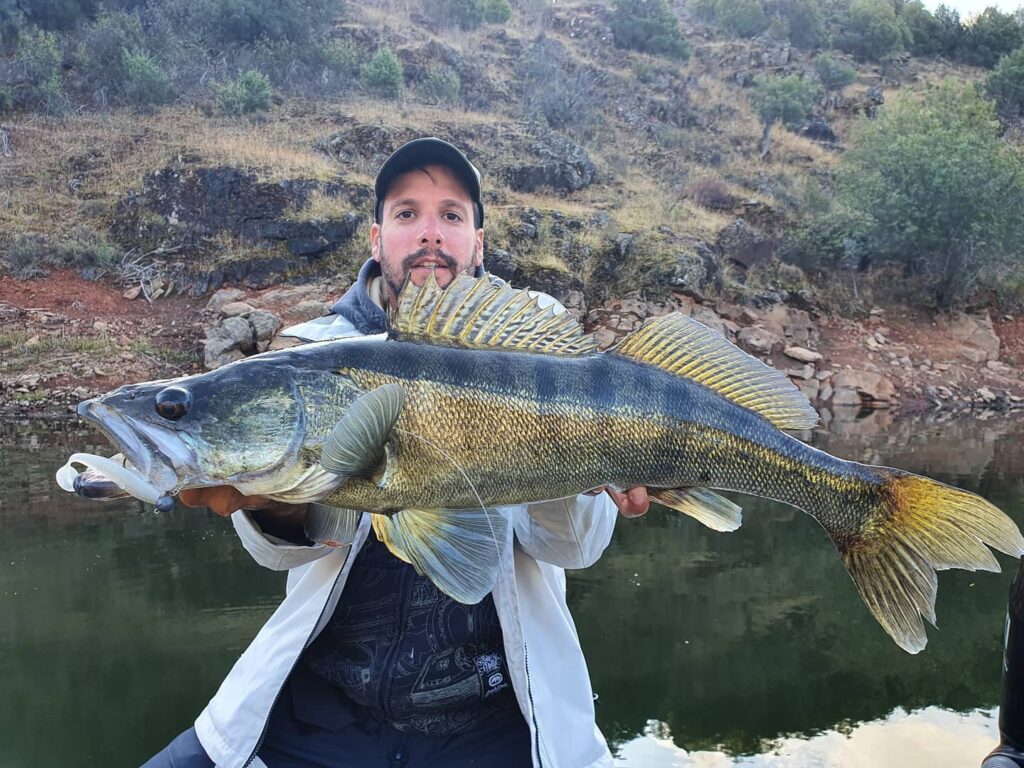
Pike-perch fishing and regulations
The pike-perch is considered to be a sport fish that is much more appreciated for its beauty, its moody behaviour and its often aggresive touch than for its fight. However, French law regulates zander fishing. Here are some of the main rules that apply to zander fishing in France:
- Minimum catch size. The minimum catch size varies from region to region and department to department. In general, the minimum size for catching a pike-perch is 50 cm. However, it may be higher in certain regions or at certain times of the year.
- Closed periods. There are closed seasons for pike-perch fishing, generally during the breeding season.
- Catch quotas. Some fishing regions and areas have quotas for pike-perch catches. These limit the number of pike-perch that anglers can catch each day or week.
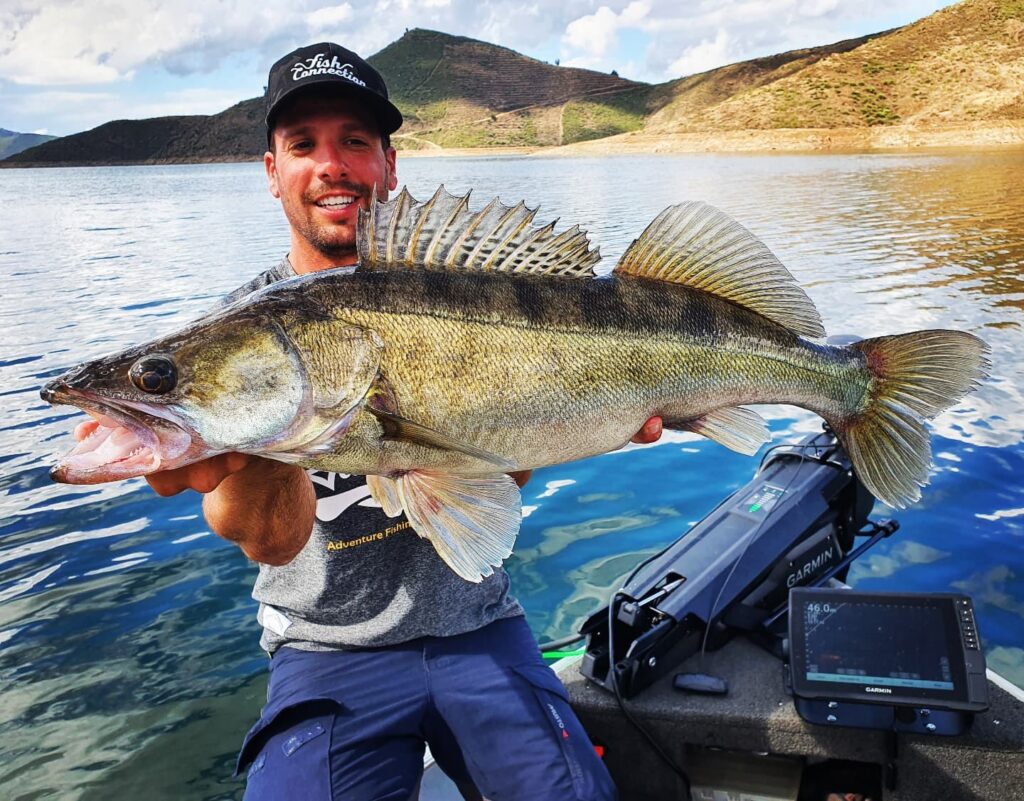
Opening and closing dates for pike-perch fishing 2023
Pike-perch fishing generally opens on 1st weekend in May in 2nd category rivers. Pike-perch are generally closed on Last Sunday in January.
This year, pike-perch fishing will open on 29 April 2029 and close on 28 January 2024.
However, we recommend that you find out about the rules in force in the region where you fish, and that you comply with any quotas and closed seasons. Failure to do so may result in a fine or suspension of your fishing licence.

Useful links to complete this article on pike-perch:
The 10 best zander lures for winter
Zander fishing: how to lure this difficult fish?

